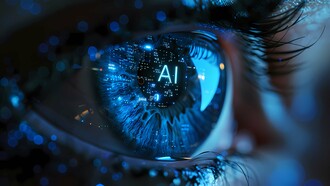It is well known that cancer is one of the deadliest diseases facing humankind at the current time. It is estimated that one in three people will develop cancer during their lifetime, making it an ever-present threat to us all. Finding a cure for cancer is deemed the Holy Grail amongst many scientists, with current treatments not being effective enough to ensure recovery or protection from cancer. Recently, genomic, proteomic, and bioinformatics techniques have allowed scientists to catch a glimpse of the interplay between genes and regulatory processes that manifest as cancerous phenotypes. The understanding of cancer is significantly improving with time, yet there is still not fool proof treatment for the disease.
Cancer as a whole
Cancer arises as a genetic disorder, which is a result of genetic alterations in the somatic cells. Research studies have shown that tumour growth is a complex process involving multiple steps, ultimately fuelling the transformation of normal body cells. The mutations that cause cancer can be slowly acquired over a person’s lifetime. Aside from these acquired mutations, some cancers appear to be genetic in origin, such as retinoblastoma. Often, mutations in proto-oncogenes are linked to cancer and are therefore a target to prevent cancer onset and progression.
It is generally well known that various chemical and physical agents can contribute to the development of cancer. Some of these agents include UV light and ionizing radiation. Yet, there are also biological agents that can contribute to cancer. Examples of these biological agents are viruses, bacteria, and parasites. To aim to prevent the onset of cancer, risk factors such as smoking, diet, alcoholism, and viral infections have been named. The strongest association between these agents and cancer was found between lung cancer and smoking.
Why is cancer treatment so difficult?
Current evidence shows that cancer often arises from a single cell with stem cell features. These findings can potentially be used to isolate targets for cancer prevention and treatment. More traditional cancer treatments assume that all somatic cells have a similar potential to become cancerous. However, this means that the traditional cancer treatments lack specificity and are ineffective in providing long-term cancer protection. Drugs that are more specific can potentially cause more regression of the cancerous cells, but they still fail to completely eliminate the cancer stem cells and lead to reoccurrence.
Conventional therapies are still the most commonly used ones, with surgery often being followed by radiotherapy or chemotherapy. When cancer is still in its early stages, surgery is the most effective option, as treatments like radiotherapy can damage healthy body cells. While chemotherapy has decreased morbidity and mortality, almost all chemotherapeutic agents cause damage to healthy cells. Drug resistance is also a major problem with chemotherapy, where cancer cells that were initially receptive to the therapy develop resistance to the drug.
Targeted therapies are being developed to treat cancer while doing less damage to normal cells. Using targeted therapy has increased the survival rate for some diseases. The survival rate has increased from 17% to 24% in patients with advanced pancreatic cancer. Some agents aim to prevent the growth of tumours by cutting off the blood supply. They also arrest tumour growth by inhibiting other factors, such as vascular endothelial growth factor.
Gene therapies use the insertion of a normal copy of a defective gene into the genome to cure a disease or disorder. Currently, there are around 2900 gene therapy clinical trials ongoing, with two-thirds of these being related to cancer. Some strategies to treat cancer include the expression of certain tumour suppressor genes, which can initiate anti-tumour immune responses. The use of gene therapy to treat cancer is still ongoing, but it holds promise for the future.















